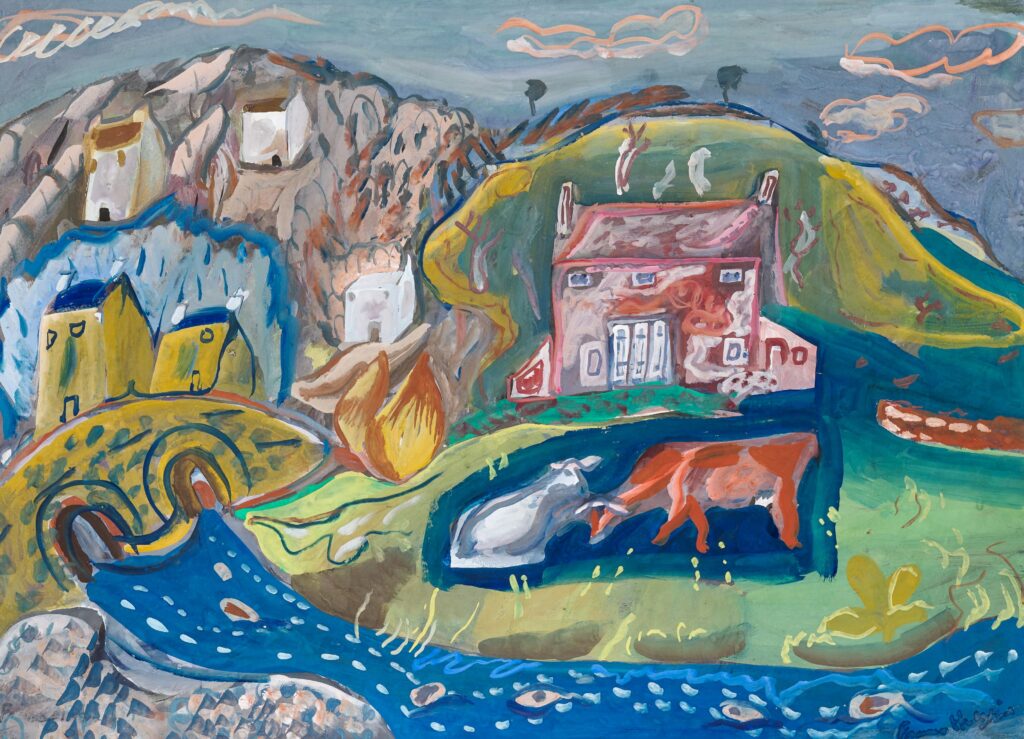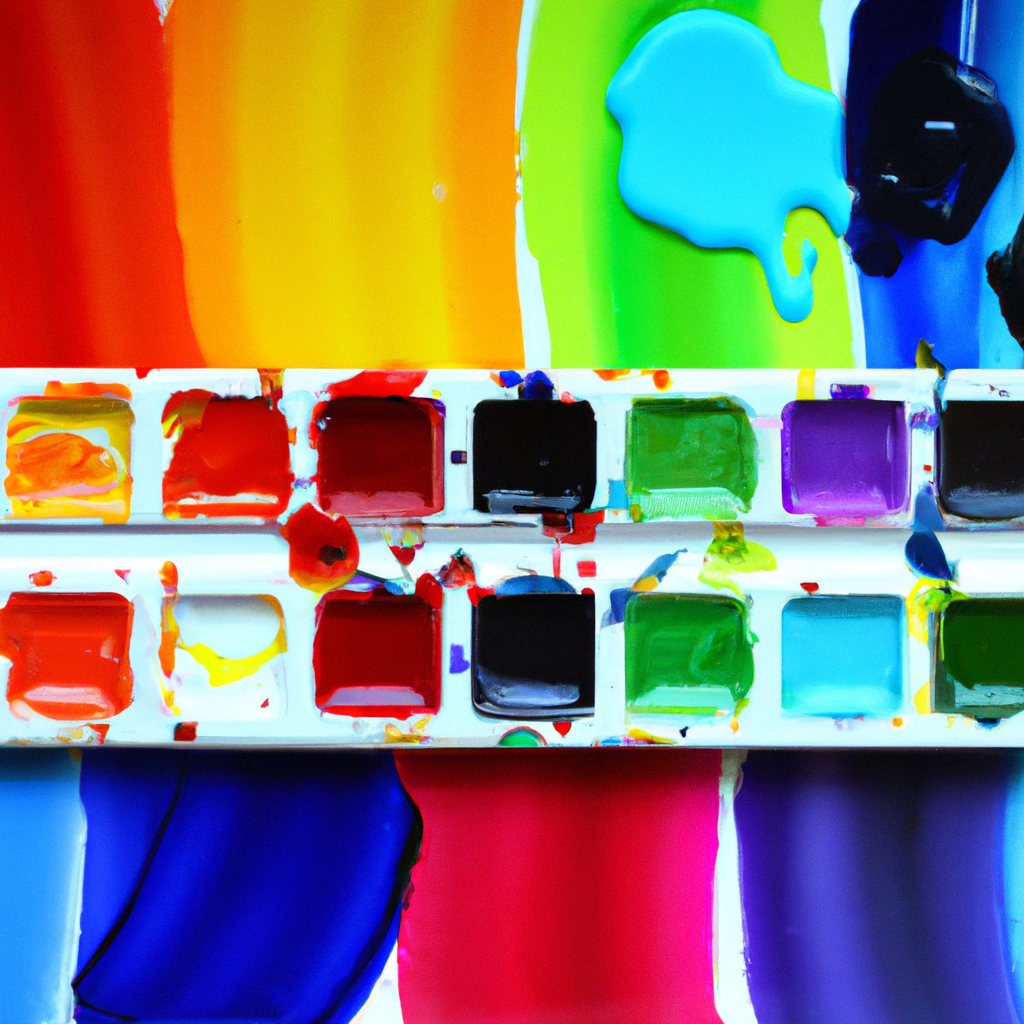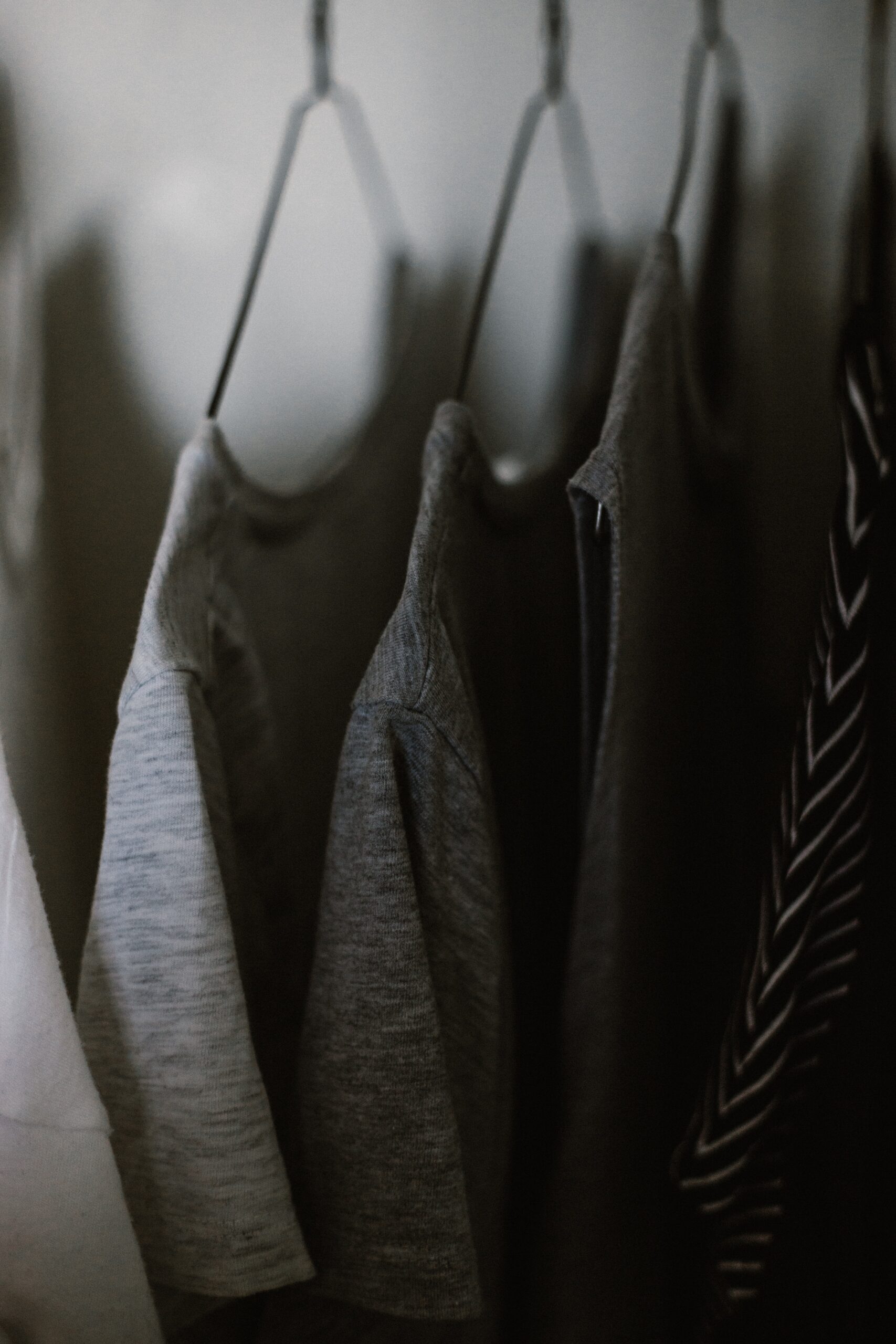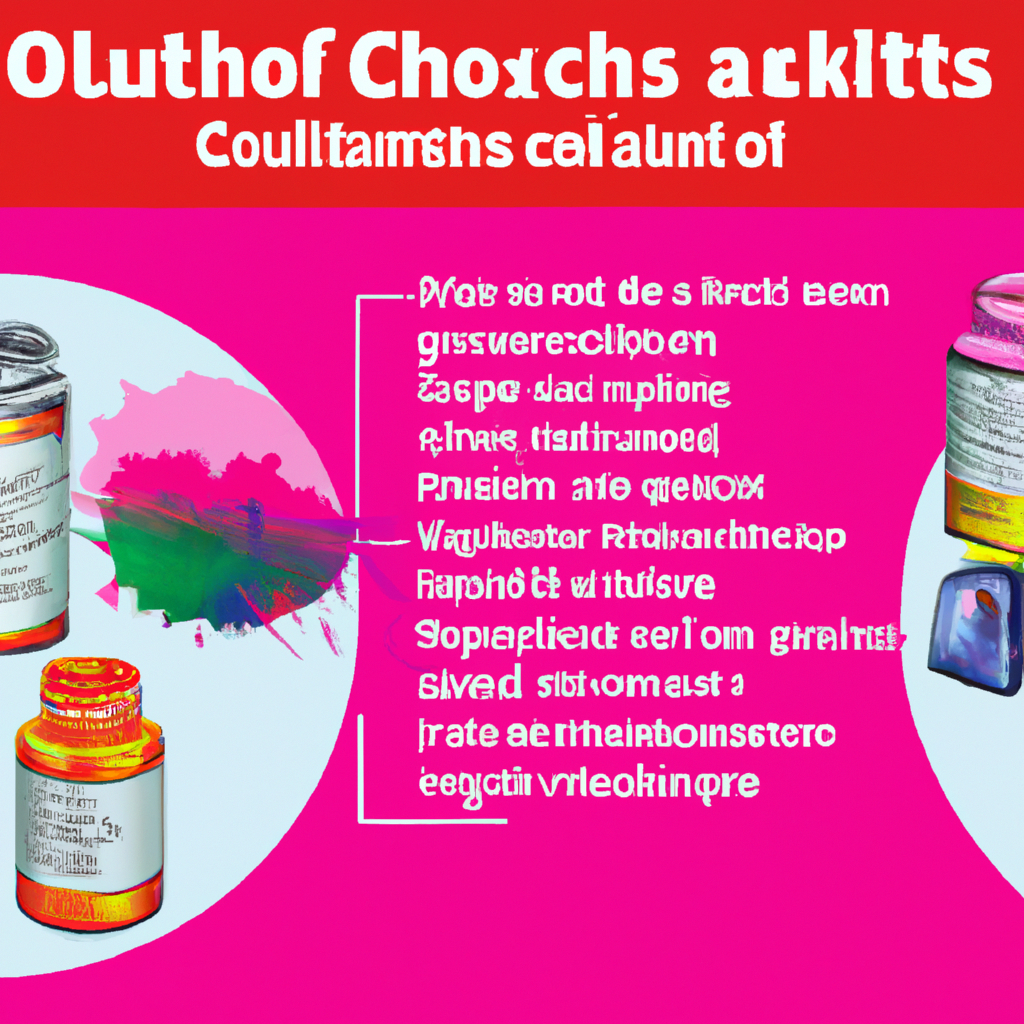Gouache painting techniques encompass a versatile and unique form of artistic expression. Gouache, derived from the Italian word for “watercolor,” is a popular medium used by artists worldwide. Unlike traditional watercolors, gouache is more opaque, allowing for vibrant and bold colors. It can be rewetted, making it easily blendable and perfect for creating stunning gradients and textures.
Whether you are an experienced artist or a curious beginner, understanding the intricacies of gouache painting techniques will enable you to unlock a world of creativity and produce captivating works of art.

This image is property of images.unsplash.com.
I. Overview of Gouache Painting
A. Definition and Description
Gouache painting is a unique technique that involves using opaque watercolors to create vibrant and highly detailed artworks. This medium is known for its versatility, as it can be used to create both translucent washes and bold, opaque layers of color. Gouache is often compared to watercolor, but unlike watercolor, it dries to a matte finish with a characteristic velvety texture. This makes gouache ideal for applications where vibrant color and fine details are desired.
B. History of Gouache
The history of gouache painting can be traced back to ancient Egypt, where it was used for various purposes, including manuscript illumination and wall decorations. However, it was not until the Middle Ages that gouache gained popularity in Europe. During this time, it was primarily used for the creation of illuminated manuscripts and religious paintings. The medium later saw a resurgence during the 18th and 19th centuries, with artists such as Francisco Goya and J.M.W. Turner incorporating gouache into their works. Today, gouache continues to be a popular choice among artists worldwide.
C. Properties and Characteristics
Gouache paint is made by combining pigment, water, and a binding agent such as gum arabic. This mixture creates a paint that is opaque and highly pigmented. The use of a binding agent gives gouache its characteristic matte finish. Gouache differs from watercolor in that it has a higher concentration of pigment, resulting in more intense and vibrant colors. Another notable characteristic of gouache is its ability to be reactivated with water even after it has dried, allowing for layers to be built up gradually. This reworkability makes gouache an excellent choice for artists who wish to make corrections or adjustments to their work.
II. Materials and Tools for Gouache Painting
A. Gouache Paint
The foundation of any gouache painting is the paint itself. Gouache paints come in a range of colors and consistencies, and they can be purchased as individual tubes or as sets. When selecting gouache paint, it is important to consider factors such as lightfastness, permanence, and quality. High-quality gouache paints tend to have a higher pigment concentration, resulting in more vibrant and saturated colors. It is also advisable to choose lightfast paints to ensure the longevity of the artwork.
B. Brushes
Choosing the right brushes is crucial when working with gouache. It is recommended to have a variety of brushes with different shapes and sizes to accommodate different painting techniques. For detailed work, a small round brush or a liner brush can be used, while larger flat or filbert brushes are suitable for covering larger areas. Synthetic brushes are often preferred for gouache painting, as they can retain their shape and perform well with the thick consistency of gouache.
C. Paper and Surfaces
The choice of paper or surface is important in gouache painting to achieve the desired effects. Gouache works best on a heavyweight, fine-grained paper or illustration board that can handle the water and pigment load of the paint. Cold-pressed watercolor paper and hot-pressed bristol board are commonly used surfaces for gouache painting. It is essential to ensure that the chosen surface is capable of withstanding repeated layers and erasing techniques without causing damage.
D. Palette
A palette is an essential tool for mixing and diluting gouache paints. Due to the opaque nature of gouache, it is important to have a palette with deep wells or separate compartments to prevent colors from mixing unintentionally. Traditional palettes made of porcelain or ceramic are popular choices for gouache painting, as they allow for easy cleaning and maintaining the integrity of the colors. Alternatively, disposable palette sheets or tear-off palettes can also be used for convenience.
III. Basic Gouache Painting Techniques
A. Wet-on-Dry Technique
The wet-on-dry technique is a fundamental technique in gouache painting. It involves applying wet gouache paint onto a dry surface, allowing for crisp lines and controlled blending. This technique is commonly used for creating detailed and precise artworks.
B. Wet-on-Wet Technique
Contrary to the wet-on-dry technique, the wet-on-wet technique involves applying wet gouache paint onto a wet surface. This technique allows for smoother transitions between colors and softer edges. It is particularly useful for creating atmospheric effects and blending colors seamlessly.
C. Dry Brush Technique
The dry brush technique involves using a brush with minimal amounts of paint on a dry surface. By dragging the dry brush lightly over the surface, this technique creates texture and adds a sense of depth to the painting. It is often used for depicting foliage, fur, and other textured subjects.
D. Glazing Technique
The glazing technique in gouache painting involves applying thin layers of translucent color over a dried base layer. This technique allows for the gradual buildup of color and creates depth and luminosity in the artwork. It is particularly useful for creating realistic skin tones and capturing subtle variations in light and shadow.
E. Grisaille Technique
The grisaille technique is a monochromatic painting technique that involves using shades of gray to establish values before adding color. In gouache painting, it is commonly used as an underpainting technique to establish the tonal values and provide a foundation for subsequent layers of color.
F. Scumbling Technique
The scumbling technique involves applying a thin, opaque layer of paint over a dried base layer using a dry brush. This technique allows for the creation of texture and the illusion of depth by allowing some of the underlying color to show through the scumbled layer. It is often used for rendering rough surfaces or adding highlights to a painting.
G. Layering Technique
Layering is a versatile technique in gouache painting that involves building up multiple layers of color to achieve depth and richness. By allowing each layer to dry before applying the next, artists can create luminous and highly detailed artworks. Layering is particularly effective for creating vibrant colors and capturing intricate details.
H. Lifting Technique
The lifting technique is the process of removing wet or dry layers of gouache paint from the surface using a damp brush or sponge. This technique allows artists to correct mistakes, adjust values, or create highlights by selectively removing areas of paint. It is important to note that this technique works best on lightly applied layers of gouache and may not be suitable for thick, heavily pigmented areas.
IV. Advanced Gouache Techniques
A. Sgraffito
Sgraffito is a technique in which layers of dry gouache paint are scratched or scraped away to reveal the underlying color or surface. This technique creates texture and visual interest in the artwork and can be used to add highlights, details, or patterns.
B. Impasto
Impasto refers to the technique of applying thick layers of paint to create texture and three-dimensional effects. In gouache painting, impasto can be achieved by using a palette knife or a stiff brush to apply thick, opaque layers of paint. This technique adds depth and tactile quality to the artwork.
C. Stippling
Stippling involves creating patterns or textures by applying small dots or strokes of paint. In gouache painting, stippling can be achieved by using a small brush or stippling brush to apply controlled dots of paint. This technique is particularly useful for creating textures such as fur, foliage, or stippled backgrounds.
D. Blending and Feathering
Blending and feathering techniques in gouache painting involve seamlessly blending colors or softening edges. This can be achieved by using a damp brush or a soft, dry brush to gently blend or feather the edges of two adjacent colors. These techniques are used to create smooth transitions and subtle gradient effects.
E. Masking Fluid
Masking fluid is a tool used to protect areas of the painting from being painted over. It is applied to the desired areas before applying gouache paint, and once the paint has dried, the masking fluid is peeled off to reveal the untouched areas. This technique is often used to preserve highlights or achieve crisp, clean edges in gouache paintings.
F. Salt Technique
The salt technique involves sprinkling salt onto wet gouache paint. As the paint dries, the salt absorbs the moisture, creating unique texture and patterns. This technique is unpredictable and can add interesting visual effects to the artwork.
G. Splattering
Splattering involves flicking or tapping the brush loaded with wet gouache paint to create scattered dots or droplets on the surface. This technique adds texture and dynamic energy to the artwork. It can be used to create effects such as rain, splashes, or texture in the background.
H. Monoprinting
Monoprinting is a printmaking technique that can be adapted to gouache painting. It involves applying gouache paint to a smooth surface, such as glass or a monoprinting plate, and transferring the paint onto paper by pressing it. Monoprinting allows for the creation of unique textures, patterns, and effects that cannot be achieved with traditional brushwork.
I. Texturizing
Texturizing in gouache painting involves using various tools and materials to create texture on the surface. Artists can use sponges, stencils, or even everyday objects to apply gouache paint and manipulate it to achieve different textures and effects. This technique adds visual interest and depth to the artwork.

This image is property of images.unsplash.com.
V. Gouache Painting Tips and Tricks
A. Preparing the Workspace
Before starting a gouache painting, it is important to prepare the workspace properly. This includes ensuring a clean and organized workspace, having all the necessary materials and tools within reach, and properly setting up the palette and paints. Cleaning brushes and laying out a protective material, such as a drop cloth or plastic sheet, can also help in preserving the painting area.
B. Color Mixing Tips
Gouache paints can be easily mixed to create an extensive range of colors. When mixing gouache, it is important to start with a small amount of paint and gradually add more as needed. This allows for better control over the color and prevents wasting large amounts of paint. It is also advisable to mix colors on the palette instead of directly on the artwork to ensure consistent results.
C. Layering Techniques
Layering is a key technique in gouache painting, and understanding how to layer effectively can greatly enhance the final artwork. When layering, it is essential to allow each layer to dry completely before applying the next to avoid mixing or smudging. It is also helpful to start with lighter, more transparent layers and gradually build up to darker, more opaque layers for depth and dimension.
D. Applying Highlights
Highlights play a crucial role in creating dimension and adding realism to a gouache painting. When applying highlights, it is important to consider the direction and intensity of the light source. By using lighter values of paint and carefully placing highlights on the areas where the light hits, artists can create the illusion of volume and enhance the overall visual impact of the artwork.
E. Troubleshooting Common Issues
Like any painting medium, gouache has its own set of challenges. Some common issues in gouache painting include streaky or uneven paint application, color bleeding, and overworking the paint. These issues can be addressed by adjusting the consistency of the paint, using a light touch when applying layers, and practicing patience. It is also helpful to experiment and learn from these challenges to improve technique and find personal solutions.
VI. Comparisons and Combinations with Other Painting Mediums
A. Differences between Gouache and Watercolor
While gouache and watercolor are both water-based painting mediums, there are several key differences between the two. Gouache is more opaque and has a higher pigment concentration than watercolor, resulting in more vibrant colors and greater coverage. Gouache has a matte finish, while watercolor has a translucent, luminous quality. Additionally, gouache can be reactivated with water even after it has dried, allowing for easier corrections, while watercolor dries permanently once applied.
B. Comparisons with Acrylic and Oil Paints
Gouache, acrylic, and oil paints are all versatile mediums used by artists, but they have distinct differences. Gouache is water-based, dries to a matte finish, and is more opaque than both acrylic and oil paints. Acrylic paints dry with a glossy or matte finish, depending on the medium used, and are water-resistant once dry, while oil paints dry slowly and retain a lustrous quality. Each medium offers unique advantages and techniques, allowing artists to explore different styles and effects.
C. Mixed Media Applications
Gouache lends itself well to mixed media applications, as it can be easily combined with other mediums to create unique textures and effects. When combined with pencil, ink, collage, or pastel, gouache can enhance the overall visual impact of the artwork. Mixed media techniques allow artists to experiment with different materials, textures, and layering methods, resulting in dynamic and expressive artworks.

This image is property of images.unsplash.com.
VII. Famous Artists and Their Gouache Works
A. The History of Gouache in Art
Throughout history, many famous artists have utilized gouache in their works, showcasing the versatility and beauty of this medium. During the Renaissance period, artists such as Leonardo da Vinci and Albrecht Durer incorporated gouache into their drawings and illustrations. In the 20th century, artists like Henri Matisse and Marc Chagall made significant contributions to the medium, pushing the boundaries of traditional gouache painting. Their works continue to inspire and influence artists today.
B. Notable Gouache Artists
Several contemporary artists have made their mark in the world of gouache painting. Some notable artists include James Gurney, known for his realistic and imaginative gouache paintings; Alina Sivova, renowned for her vibrant and detailed botanical illustrations; and John Lovett, recognized for his expressive and atmospheric gouache landscapes. These artists demonstrate the diverse range of styles and techniques that can be achieved with gouache.
C. Iconic Gouache Paintings
Gouache paintings have created some iconic artworks throughout history. Francisco Goya’s “The Third of May 1808” is a notable example, showcasing the intense emotion and bold use of color that gouache can achieve. Paul Klee’s “Senecio” is another iconic gouache work, known for its abstract and stylized representation of a face. These paintings exemplify the expressive potential of gouache and the impact it can have on the viewer.
VIII. Gouache Painting Trends and Contemporary Approaches
A. Experimental Techniques
In recent years, artists have been pushing the boundaries of traditional gouache painting by experimenting with new techniques and approaches. Some artists have incorporated unconventional materials and processes into their gouache artworks, such as using stencils, collage, or digital manipulation. These experimental techniques allow artists to explore new possibilities and create unique and innovative artworks.
B. Gouache in Illustration and Design
Gouache has long been favored by illustrators and designers for its versatility and vibrant colors. Its opaque nature and ability to produce fine details make it ideal for creating illustrations, book covers, and graphic designs. Many contemporary illustrators continue to embrace gouache as a primary medium for their artworks, showcasing its timeless appeal and application in various creative fields.
C. Modern Artists Pushing the Boundaries
Contemporary artists are continually pushing the boundaries of gouache painting, exploring new techniques, styles, and themes. Some artists combine gouache with other mediums or digital technologies, blurring the lines between traditional and digital art. Others experiment with scale, perspective, and abstraction, challenging traditional notions of gouache painting. These modern artists are redefining the possibilities of gouache and inspiring a new generation of artists.
D. Online Communities and Resources
With the advent of the internet, online communities and resources have become valuable tools for gouache painters. Artists can connect with fellow gouache enthusiasts, share their work, and seek inspiration and advice from others. Online tutorials, demonstrations, and workshops have also made learning gouache techniques more accessible. These resources allow artists to continue developing their skills, stay informed about new trends, and find support within the gouache community.

IX. How to Start Gouache Painting
A. Choosing the Right Gouache Set
For beginners, choosing the right gouache set is crucial. It is advisable to start with a basic set that includes a range of primary colors and some earth tones. This allows beginners to experiment with color mixing and get familiar with the medium. It is also important to consider the quality and lightfastness of the paint when selecting a set.
B. Essential Tools for Beginners
In addition to paints, beginners will need a few essential tools to get started with gouache painting. These include a selection of brushes in different sizes and shapes, a palette for mixing colors, a water container for cleaning brushes, and a sturdy drawing board or easel to work on. With these basic tools, beginners can start exploring the various techniques and styles of gouache painting.
C. Basic Techniques to Master
Before delving into more advanced techniques, beginners should focus on mastering the basic gouache painting techniques. This includes becoming familiar with the wet-on-dry and wet-on-wet techniques, practicing color mixing, and understanding how layering works in gouache painting. By gradually building confidence in these foundational techniques, beginners can lay the groundwork for more complex and refined artworks.
D. Step-by-Step Gouache Painting Tutorial
A step-by-step tutorial is a valuable resource for beginners to learn and practice gouache painting techniques. It provides a structured approach to creating a specific artwork, guiding beginners through each stage of the painting process. The tutorial should include detailed instructions, images, and tips to help beginners grasp the techniques and apply them effectively. By following a tutorial, beginners can gain hands-on experience and develop their skills in a supportive and structured manner.
X. Conclusion
Gouache painting offers a unique and versatile medium for artists to express their creativity. With its vibrant colors, matte finish, and the ability to create fine details, gouache has captivated artists for centuries. By understanding the history, properties, and techniques of gouache, artists can unleash their artistic potential and create compelling and visually stunning artworks. Whether starting out as a beginner or exploring new trends and approaches as an experienced artist, the world of gouache painting offers endless possibilities and a journey of artistic discovery.




